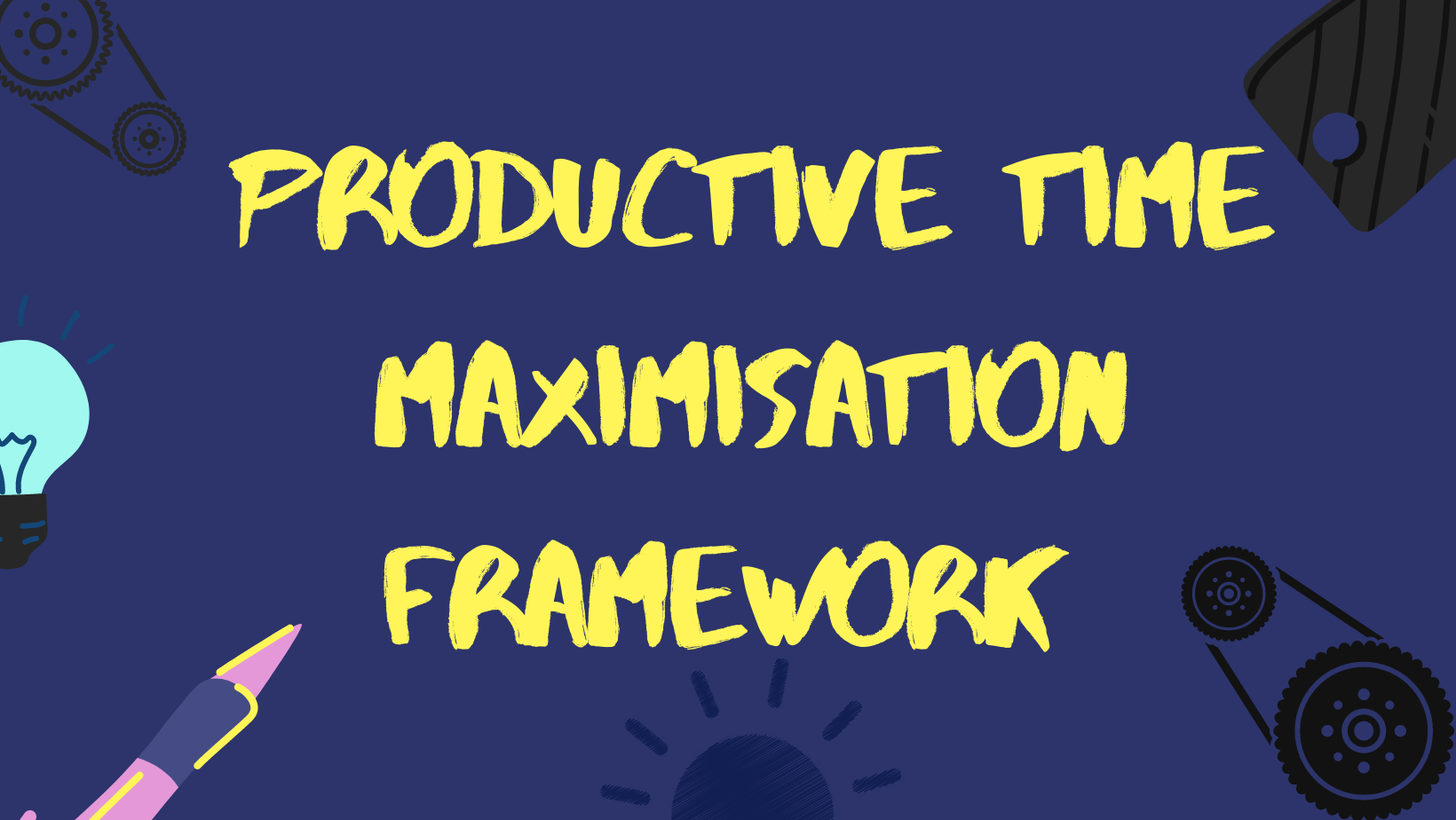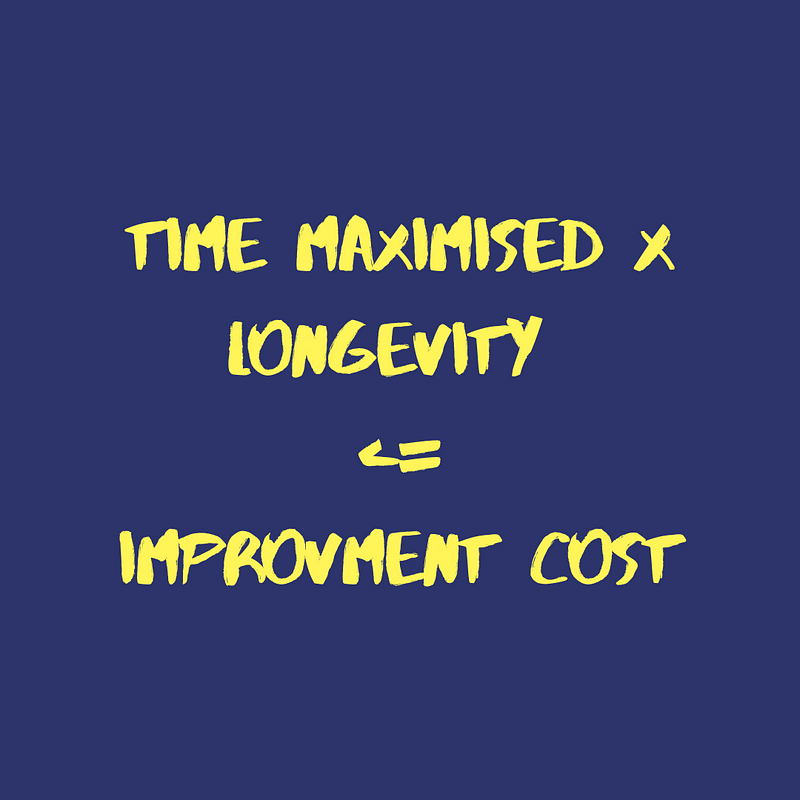Use the Productive Time Maximisation Framework to Level Up Your Business
Maximising your Productive Time creates extraordinary value. Follow this framework to find out how to do this.

Maximising your Productive Time creates extraordinary value. Follow this framework to find out how to do this.
Building an amazing company which lasts demands answers to three questions:
Almost every leader I’ve interacted with comes to a simple conclusion upon diving into these questions.
We need to change
They say things like:
Maybe that’s you.
This can be a frustrating realisation. The time spent doing taking tasks which could (and should) be automated/eliminated results in a destructive opportunity cost. Rather than developing and delivering wonderful, incredible and powerful ideas in our businesses we become limited. Our time evaporates as the seemingly never ending series of things which must be done continues to assault us. The impact: We feel unable to reach our full potential.
Complicating this is that changing this story often feels out of reach. Somehow we’ve accepted a destructive belief, buried in the myth of the ‘incredible entrepreneur’ — that without some kind of lucky accident or extraordinary gift, there’s nothing we can do about the situation. The result: We feel systematically limited from reaching our full potential.
It’s easy to ask: Why bother?
I don’t believe it has to be this way. After 10 years in leadership and starting several businesses, I believe there’s a way for almost any business (including yours!) to take what you’ve got and flourish.
It’s something I’m deeply passionate about. Each of us has been created with something unique and valuable to offer — and that includes you! It’s my goal in life to find ways to maximising every persons time investment in their pursuit of what they were created to do. I call it Productive Time and it’s the best way I can imagine to live a full life.
To help, I’ve developed the Productive Time Maximisation (PTM) Framework.
It’s not a magic formula for instantaneous profit. Nor does it take the place of inspiration for the incredible gifts and talents buried inside of you. The things inside of you just waiting to burst onto the worlds stage are yours and yours alone, and no one can take them from you.
The PTM Framework provides a systematic way to maximise your Productive Time. Armed with the language and thinking patterns to eliminate time wasting tasks, you’ll increase the time you can invest in continuing to level up your businesses. The outcome: You’ll be able to invest in creating your very own PTM Flywheel of growth and a business which will add incredible value to the world
I can’t wait to see what you can do ❤
The PTM Framework starts with the PTM Creed. Say after me…just kidding, but it is something you should internalise:
With creed in hand, it’s time to destroy those opportunity costing time wasters!
We commit to become the most time-efficient organisations in the world
Big Vision, Small Steps
There’s a creative tension between Big Vision and Small Steps.
Big Vision sets the next destination. It translates ‘The best is yet to come’ into ‘Here’s what we’re going to achieve’. Big Vision can feel inspiring, invigorating and sometimes terrifying.
Small Steps are how we achieve Big Vision. They embody ‘A journey of 500 miles starts with a single step’. I don’t know about you, but Small Steps can feel uncomfortable, challenging, and sometimes frustrating compared to Big Vision.
We need both to maximise Productive Time
Knowing our next destination gives us a prioritisation framework. For you, these might be important things like:
Simultaneously, we need Small Steps. No matter what the Big Vision is, there’s going to be a series of Small Steps to get there. Some Small Steps might not be visible right now, but we’re still going to need to walk them. They might consist of things like:
Whatever it is, we’ve got to have both. We get there by:
Above all: Doing each of the above consistently. It’s not a once and forget type of thing. It’s going to become part of your regular habit.
Do this and you’re well on your way to maximising your Productive Time.
There’s a truism in leadership that says that “what we measure is what people focus on”. Without going to deep into the theory and practice of effective measurement (although I highly recommend The Four Disciplines of Execution), the truism is accurate.
What we measure matters
Systems of measurements and reward inform culture, values and time investment. For instance, if I measure a sales person by the number of sales made, rewarding them for higher sales, I’m subtly informing them that developing long-term customer relationships is of lesser value than simply closing a deal. The resulting impact is typically a focus on negative emotional drivers to close deals, instead of time invested in relationship building. Depending on your business, that might be a positive thing, but for many that’s not ideal at all.
To maximise Productive Time, our measurement system must align with our PTM Creed. It must:
Imagine this hypothetical. An organisation wanted to reduce the amount of time staff spent entering repetitive information. They determine that they would measure the number of clicks and screens required to enter the information, then offered a reward for every click saved. Within weeks they reduce the number of clicks for a given form from 30 to 5, a saving of approximately 12.5 minutes per form (with no loss in quality). Multiply that by 50 forms a week and suddenly you’re saving 10.4 hours per week, or just over 1 week per month.
Imagine what you could achieve an extra week per month?
One of the most powerful parts of this measurement journey is the immediate insights it offers. I’ve seen business leaders have incredible insights within literally hours of reflecting on their measurement systems.
Why? Because Measurement Denotes Value. We can choose to align our values.
These insights provide fuel for Big Vision, Small Steps. Bolstered with observations about the real time sinks in your organisation, you have an unending source of Productive Time Maximisation Opportunities for your business.
Feed these PTM Opportunities into your business and you’ll be amazed as your business transforms.
Now it’s time for that exciting moment of implementation. The moment where your research, insight and planning is made reality.
It’s a wonderful moment — if a little terrifying at times!
So let’s talk about how maximise our Productive Time, while avoiding what I call the Two Fold Business Trap:
As leaders, we are stewards of the resources we’ve been given. All of our activity must be linked to delivering value for our stakeholders.
Our PTM strategy must deliver value for our stakeholders. Not every ‘fad’ will be a win for our businesses. Conversely, there may be opportunities which never graduate to ‘fad’ status which turn out to be incredibly transformative for your business.
The Two Page Business Case gives you a way to figure out which is which. It calculates whether:
Time-Maximised x Longevity ≤ Improvement Cost
Best of all: the business plan is only allowed to be two pages, thereby minimising (you guessed it) the time spent on saving time. It’s like PTM Inception!

Message me on LinkedIn if you’d like a template.
True change is always more effective through the lens of what matters. Things like:
The PTM Framework is no different.
Framing the change through the lens what matters is your way of demonstrating your PTM Creed in action. You have invested time in reinforcing all of the steps we’ve gone through so far — and in so doing demonstrated it’s importance, value and effectiveness.
If you’ve done the research, completed your Two Page Business Case and costed your investment, it’s time to Go All In.
Don’t hold back. Show yourself, your business and the rest of the world that you’re in this to create something which lasts. Articulate it over and over again. Share it on your social media networks. Share it with me on LinkedIn, Twitter or Instagram. I’ll be sure to celebrate with you because you’re achieving the amazing.
Measure the results regularly and share them with your stakeholders. Get feedback and make the adjustments necessary to keep momentum going.
And every now and again stop to reflect on just how amazing this whole process is. Reflect on the amount of Productive Time you’ve redeemed. Give yourself, your team and your business a meaningful reward.
You rock ❤
As you dive into the PTM Framework, you’ll notice a steady increase in the amount of Productive Time available.
Nice one!
Now you have a precious, wonderful opportunity to do something beautiful. It’s your time to:
And guess what?
You’ve just created your very own PTM Flywheel ❤